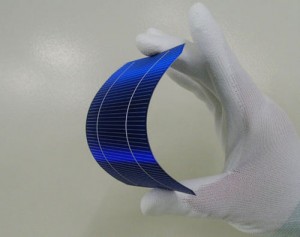
The development of increasingly efficient and cost-effective thin-film solar cells has greatly furthered the production of clean, renewable solar energy. It has in particular made the development of lightweight, flexible solar panels possible, a major advance in photovoltaic, or solar-energy, technology.
The Basics
Solar panels are composed of integrated groups of photovoltaic cells that convert sunlight into electricity. These panels are often components of larger systems due to the limitations in how much power single panels can produce. These systems usually include an orderly arrangement of solar panels, an inverter for changing direct current into alternating current, and sometimes a battery, a solar tracker that orients the panels toward the sun, or both.
History of Thin-Film Solar Cells
Handheld calculators powered by thin-film solar cells came on the market in 1978. The technology’s applications were limited, however, due to the cells’ low output and high cost. Continuing research and development have steadily increased their efficiency and lowered their cost, and in this century they have become practical for systems integrated into such parts of the building envelopes of large structures as skylights, roofs, and facades.
Rooftop Advantages
Some of the advantages of thin-film technology over traditional solar panels on roofs are that they weigh much less, enabling them to cover much more of a roof without additional weight endangering it, resist wind lifting due to being applied directly to the roof surface, and can survive careful foot traffic, enabling them to cover every possible square centimetre. They also need no brackets or mounting devices, enabling them to be less visually obtrusive, thereby improving the aesthetics.
Other Advantages
A new semitransparent type can glaze and moderately tint window glass while generating electricity. It also performs well in poor light. As the price of crystalline silicon has risen the cost of making silicon-based panels has become considerably higher than that of non-silicon thin-film panels, the cost of which is soon likely to drop to about £30 per square metre, or about £0.30 per watt, and before much longer become even cheaper thanks to large-scale research and development work now being undertaken in China.
Flexibility Means Portability
One of the greatest advantages of thin-film solar energy technology is its ability to produce solar panels that are flexible, bendable, foldable, and rollable. Hikers, cyclists, kayakers, and climbers can carry them on their expeditions, and they can provide electricity for yachts and other vessels. They could also line the outer fabrics of military backpacks to power field communications. Indeed, they open up the possibility of making clean, free electricity available for any portable application.
